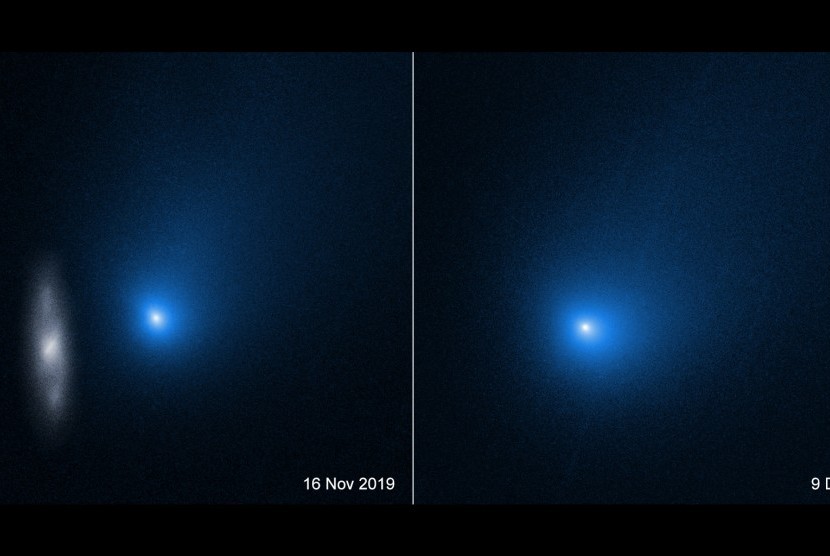The trajectory of comet 21 / Borisov may come from another solar system.
REPUBLIKA.CO.ID, JAKARTA – On August 30, 2019, the Solar System was visited by a foreign comet which was later referred to as 21 / Borisov. Recent research has revealed that it is one of the “purest” comets ever observed, holding clues from the distant past in the world.
The observations about the comet are published in the journal Nature Communications.“In general, the common comets that we usually study have orbits where they approach the Sun over time and as they approach the Sun, their surface changes,” said Ludmilla Kolokolova, a researcher in the department of astronomy at the University of Maryland and co-author of the new study, to Inverse.
Comets are icy bodies made up of frozen gas, rock, and dust, material that likely originated billions of years before the formation of planets and other celestial bodies. As a comet moves closer to the Sun, the star’s strong gravitational force can weaken and destroy it as it gets closer.
Solar radiation, wind, and particles emitted by the sun tend to vaporize carbon and other materials in comets. Most of the comets that scientists in the Solar System commonly observe have been altered by their travels around the host star.
However, the research team found that, unlike comets in general, 21 / Borisov has a chemical composition consistent with its integrity since its formation. This means that it was likely to have been “ banished ” from its system of origin early in its history.
Scientists believe that comets are composed of matter that was left over from the formation of star systems, the remnants of the material that made up planets. Observing comets forming from within our solar system tell us about the early history of planets like Earth and Jupiter.
However, interstellar comets do give us clues about neighboring star systems. Neil Dullo Russo, a planetary astronomer at Johns Hopkins University who was not involved in the research, said comet 21 / Borisov is giving scientists a different picture than usual.
“We only measure comets from our solar system and we are trying to get clues as to what their chemical makeup looks like in the comet-forming regions of our solar system,” Russo said.
That’s why, Russo said, measuring this interstellar object is so valuable. This is rarely seen and it gives scientists an idea of what chemical processes are taking place in the solar system other than ours.
The interstellar comet is currently too far away for further observations. However, scientists are optimistic that they can find more comet antarbintang this and can investigate for more clues about alien star systems.
– .


